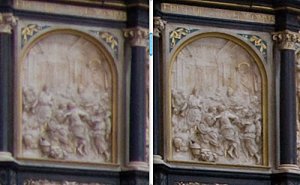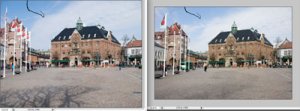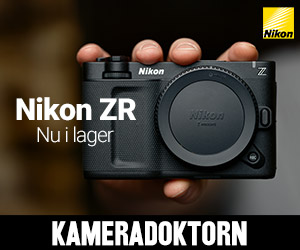elbe skrev:
Jag tycker Clark visions två slutsatser i deras utredning i frågan om kameror med små sensorer vs kameror med stora sensorer visar den omöjliga setupen för en jämförelse och varför en större sensor alltid är bättre än en mindre.
Mikael Risedal m.fl. har i denna tråden otaliga gånger försökt förklara samma sak.
Min enlka test med G9, en av de bästa kompakter som finns, visar att diffraktionen troligtvis slår ut den redan på bl. 3,2. Se även sista stycket i andra slutsatsen nedan.
Clark Vision:
"Conclusions
Given the identical photon noise, exposure time, enlargement size, and number of pixels giving the same spatial resolution (i.e. the same total image quality), digital cameras with different sized sensors will produce images with identical depths-of-field. (This assumes similar relative performance in the camera's electronics, blur filters, and lenses.) The larger format camera will use a higher f/ratio and an ISO equal to the ratio of the sensor sizes to achieve that equality. If the scene is static enough that a longer exposure time can be used, then the larger format camera will produce the same depth-of-field images as the smaller format camera, but will collect more photons and produce higher signal-to-noise images. Another way to look at the problem, is the larger format camera could use an even smaller aperture and a longer exposure to achieve a similar signal-to-noise ratio image with greater depth of field than a smaller format camera. Thus, the larger format camera has the advantage for producing equal or better images with equal or better depth-of-field as smaller format cameras."
"Conclusions
Current good quality sensors in digital cameras are photon noise limited. This means there is no possible improvement in performance for the high signal region (bright things in an image) except to increase quantum efficiency of the devices and/or the fractional active area for which the sensor converts photons to electrons (called the fill factor). As both of these properties are reasonably high already, there is limited room for improvement. And even if these properties were improved, there would still be a big difference between large and small pixels. Larger pixels have reduced noise at all levels, but especially at low signal levels. The obvious improvement still possible would be to reduce the read noise, but that would likely improve large sensors also, thus large sensors will always have an advantage. Whether the difference in noise is great enough for you to choose a larger sensor, and thus likely a larger and heavier camera, is a decision you must make for yourself.
Because good digital cameras are photon noise limited, the larger pixels will always have higher signal-to-noise ratios unless someone finds a way around the laws of physics, which is highly unlikely.
Image detail can be blurred by diffraction. Diffraction is more of an issue with smaller pixels, so again cameras with larger pixels will perform better, giving sharper images"
Länkarna till dessa citat finns i tråden någonstans.
/Leif












